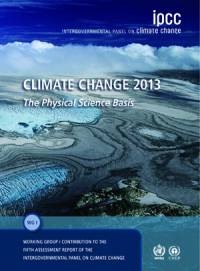Recently, the United Nations’ Intergovernmental Panel on Climate Change (IPCC) released their Fifth Assessment Report, Climate Change 2013: The Physical Science Basis; the first since 2007. The report chronicles the state of the science on climate change. The impressive work is the collaborative product of hundreds of scientists from nearly 200 countries drawing on thousands of research studies. It is the authoritative source on the subject. And unfortunately much has changed since the 2007 report and not for the better.
Overall, the report shows increased certainty pertaining to those trends you hear the most about. Surface and ocean temperatures are warming, sea level is rising, ice sheets are melting, weather is becoming more extreme and scientists are more confident than ever that humans are the cause of this warming and the resultant impacts (95% certainty, up from 90% in the 2007 report). This is primarily due to the burning of fossil fuels. Weighing in at 166 MB of facts, figures, probabilities and citations, the full report is not for everyone. However, if you are interested in the main messages, there is a Summary for Policymakers, that at 36 pages with highlighted key points, is much more digestible.
The hardest hitting statement for me as I was reviewing the report is that “Most aspects of climate change will persist for many centuries even if emissions of CO2 are stopped”. With no meaningful effort to curb the release of CO2 into our atmosphere on the global table, it is certain that at the local level, we will need to respond to changes. It drove home the importance of the work of HRWC and the communities of the Huron River watershed toward achieving climate resiliency. Climate resiliency is the ability of communities, both built and natural, to (pun intended) weather the storm. When rain events dump more water in shorter periods of time, when summer droughts and heat waves become more common, when shifts in seasonal patterns challenge the balance of nature (e.g. flowering of fruit trees ahead of potential for frost events or arrival of pollinators), will we have the systems in place to minimize the impact?
The river can be our friend or our enemy as climate changes. The river and our watershed have an amazing capacity to absorb and slow the energy of flowing water. Given natural areas to allow water to reach the soil and undeveloped floodplains to contain high water, the river can protect us from flooding. On the other hand, adding more pavement and building in the floodplain can exacerbate the damage a storm can cause. By making smart choices now, we build in protections for what may come. We can’t say exactly where, when or how the impacts of climate change will make its mark on our place but we can take action that prepares us for an uncertain future. Sounds good, right?
Learn more about local climate resiliency efforts on our website.




